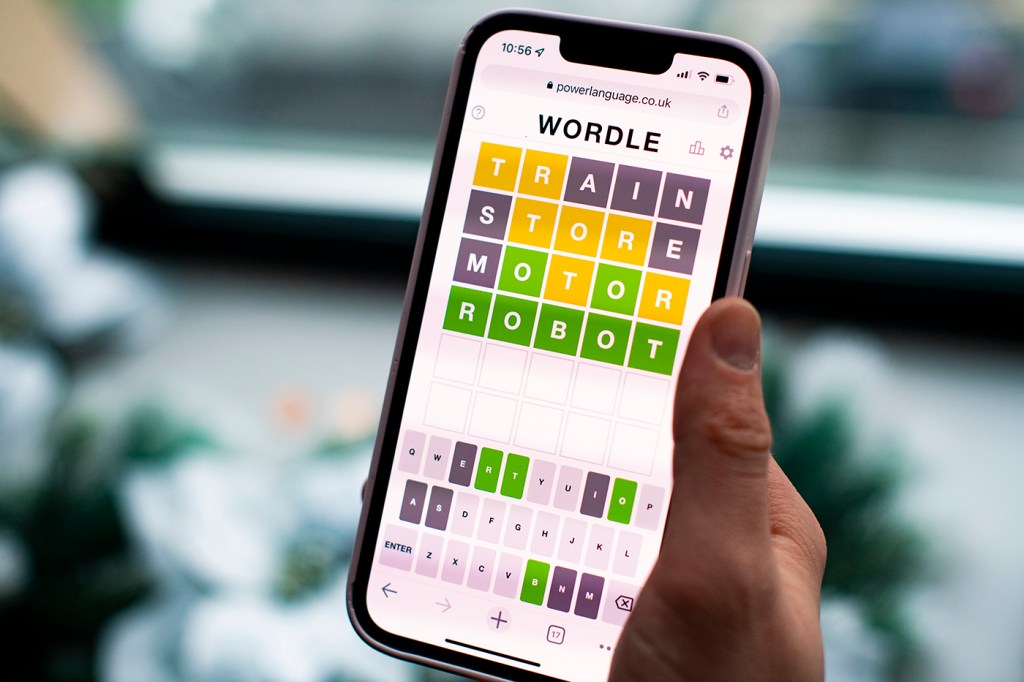What makes Wordle so G-R-E-A-T?

Robot. Point. Proxy. If these words mean anything to you, then you’ve caught the Wordle bug—and you’re not alone. Millions of people around the world log in to play the word-guessing game every day (including the musician Lizzo, whose chagrined, one-word tweet resonated with thousands of other players).
A lot of clever features have made it so popular, say two Northeastern experts, including its one-a-day design. Each day, players have six chances to guess a five-letter word. That word is the same for everyone, every day.

Celia Pearce, left, is a professor of art and design in the College of Arts, Media and Design at Northeastern. She’s also a game designer who specializes in fan culture and emergent behaviors. Yakov Bart, right, is the Joseph G. Riesman Research Professor at D’Amore-McKim School of Business at Northeastern.Northeastern University Photo and Photo by Matthew Modoono/Northeastern University
“When everyone is solving the same puzzle around the world, that helps with building a community,” says Yakov Bart, associate professor of marketing at Northeastern, and an expert on digital marketing and social media. “It would be very easy to have set up the game so that each player keeps getting served new puzzles once they’ve solved one, but it was a strategic design choice to keep it at one per day.”
The slow drip of puzzles builds anticipation among players, and keeps people coming back day after day, says Bart, who is also the Joseph G. Riesman Research Professor at D’Amore-McKim School of Business at Northeastern. “It’s a tradeoff between engagement—the amount of time people spend on your product—and shareability,” he says.
It was a breakthrough for Wordle’s creator, too. Josh Wardle (that’s where the name comes from) told The New York Times that limiting players to one game a day created a sense of scarcity, and left people wanting more.
Plus, Wardle didn’t create the game to make money—there are no ads or blinking banners. “I think people kind of appreciate that there’s this thing online that’s just fun,” Wardle told the Times. “It’s not trying to do anything shady with your data or your eyeballs. It’s just a game that’s fun.”
Another feature of Wordle helps with its shareability, too. The game includes a button that allows players to share their grids online, without spoiling the day’s answer. On some days, these green, yellow, and gray squares seem nearly ubiquitous on Twitter and other social platforms.
“The easier it is to share, the easier it is for the content to spiral out of niche communities and into the zeitgeist,” Bart says.
Wordle’s timing is an important factor, too, says professor Celia Pearce, a game designer who specializes in fan culture and emergent behaviors.
“Part of what’s been happening over the last two years is that people are looking for new ways to connect, because it’s been so hard to connect in person,” she says. “People want fun things to do together.” Though Wordle is a one-player game, the social aspect of it gives people a way to be in community with each other, Pearce says.
Additionally, the nature of word games in general makes them appealing to a wider audience, not just young people, Pearce says. Games such as Wordle and Words With Friends harken back to Scrabble, and therefore may entice a multigenerational population of players.
“A game that resonates with people’s experience of playing games growing up is going to be successful,” Pearce says.
For media inquiries, please contact Marirose Sartoretto at m.sartoretto@northeastern.edu or 617-373-5718.





